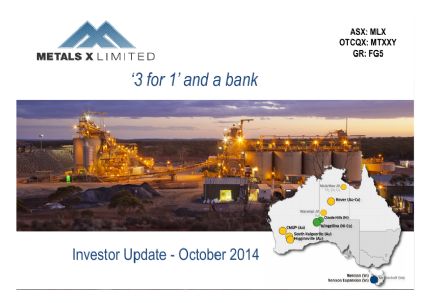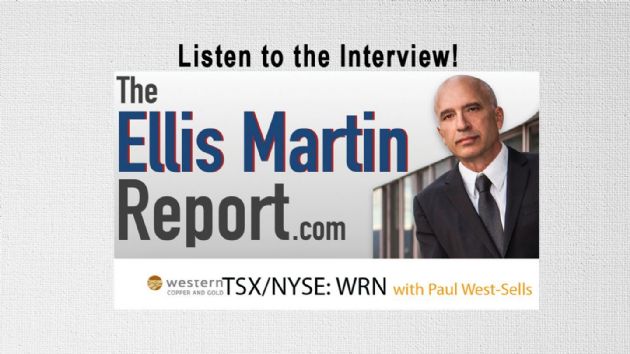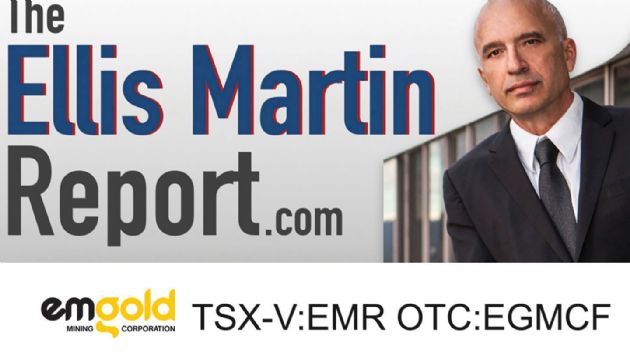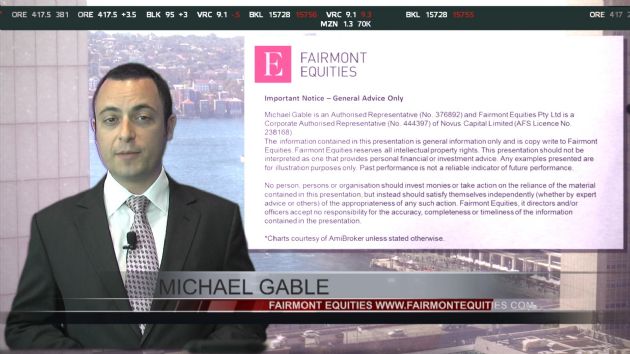 At a time when the financial world seems to be mesmerised by the actions of (and the reactions to) the new Trump Administration in the US, concerned over rises in interest rates and also with renewed and increasing calls for an impending 'US stock market crash', the global economy of at least 4,500m other people seems to be following its own course and is doing just fine.
At a time when the financial world seems to be mesmerised by the actions of (and the reactions to) the new Trump Administration in the US, concerned over rises in interest rates and also with renewed and increasing calls for an impending 'US stock market crash', the global economy of at least 4,500m other people seems to be following its own course and is doing just fine.
In fact, the foundations for the Dawes Points Global Boom seem stronger than ever.
Major equity indices around the world are making new all time highs and those in Asia are breaking out upwards after long periods on consolidation.
World steel output is showing encouraging growth and is indicating the Asian Boom is continuing. Australian stocks and the A$ should soon be reflecting all this.
Key Points
- Global equity markets breaking through major resistance to new all time highs
- China, India, ASEAN, Africa make up 48% of global GDP and growing
- US housing starts robust and housing sector stocks making 11 year highs
- World Feb 17 steel up 4.1% over Feb 16 (+7.8% annualised for 28 days vs 29 in 2016)
- China Feb 17 steel output 798mtpa up 4.6% YoY (+8.1% annualised)
- Rate of change indicators suggesting further steel production growth in 2017
- Non-OECD now exceeds 70% of global steel consumption
- Indian crude steel output exceeds 100mtpa for first time in Jan 17
- Iron ore price still exceeding US$80/t basis 62% Fe CIF
- All Ords targets above 7500 (+30%) by end 2019
- Gold sector BUY recommendation reinforced
Important stocks are:
- BHP Billiton (![]() ASX:BHP)
ASX:BHP)
- Rio Tinto (![]() ASX:RIO)
ASX:RIO)
- Fortescue Metals (![]() ASX:FMG)
ASX:FMG)
- South32 (![]() ASX:S32)
ASX:S32)
- Northern Star Resources (![]() ASX:NST)
ASX:NST)
- Western Areas (![]() ASX:WSA)
ASX:WSA)
- Metals X (![]() ASX:MLX)
ASX:MLX)
- Magnetite Mines (![]() ASX:MGT)
ASX:MGT)
Do review the price action in the major indices and note, at least from my experience and perspective, none appears to be overbought or over extended enough to produce the conditions that leads to sharp corrections. Rising Fed Funds Rate and rising bond yields are positive economic signs and encourage maturing bonds to be redeployed elsewhere and into equities in particular.
Earlier this year Dawes Points highlighted the rise and rise of the new growth regions as they took an ever greater share of global GDP.
ASEAN and the other 'Asian Tiger Economies' of the 1990s were joined by China in what became a 15 year economic expansion and as we view the next decade ahead we see India finally coming into the picture and we see Africa adding some perhaps unexpected spice in the very near future.
Since 2000, the regions have doubled their combined share of nominal global GDP to almost 40%.

Sub-Sahara Africa has slowed in recent years but recent higher copper, gold and oil prices have provided new boosts and growth numbers should surprise many.
Population growth has also been important. These regions make up a growing 58% of the world’s population.

So seeing 3,300m Asians joining via the One Belt One Road concept with another 1,200m in Europe and indirectly, 900m in Africa, makes concentrating on 330m people in the US somewhat misplaced.

Be aware of the influence of these countries in the Asian Century.

IMF data 2015
So coming back to steel.
The global steel industry is a fundamental indicator of industrial activity and the World Steel Association monthly data gives some of the best near-real time evidence of the world economy. The Feb 2017 figures have provided a 4.1% YoY gain but this is actually an annualised rate of 7.8% higher adjusting for the 29 days in Feb 2016.
Looking the annualised China vs USA crude steel graphic it is clear China has maintained crude steel production at about 800mtpa for the past three years while the US has remained around 80mtpa.

Looking more closely at the data, the obvious seasonal influences of Christmas (China is the fourth(?) largest Christian country) and the moving feast Spring Festival (Chinese New Year) soon after can result in long holiday periods and produce some remarkable seasonal variations but the smoothing 12 month and six month moving averages provide some key forecasting indicators.
The six month moving averages allowed Dawes Points to call an upturn in China crude steel production early in 2016 and, after closely watching depleted steel mill steel and iron ore inventories, forecast a strong rise in iron ore prices to above US$80/t in 2016.
This same data series is suggesting a good year for steel in China in 2017 with the latest data showing crude steel production for Jan and Feb to be 7.6% higher than 2016.
The blue short term indicator is suggesting a seasonal bottoming but the red 12 mth moving average is well up and rising.

The bigger picture says Non-OECD consumption is the key to global raw material demand and this graphic speaks volumes.
Over 70% of steel is consumed outside of the OECD.

The US produces about 80mtpa of steel from mostly electric arc furnaces (EAFs - 55% of capacity) that use steel scrap rather than virgin iron ore (in blast furnaces) and imports about 40mtpa. An infrastructure programme might restart maybe 10mtpa of shut capacity but imports may have to rise by another 30-40mtpa.
China has been the biggest growth story in steel production with the massive rise (just using the data from the graphic above) from 300mtpa in 2005 to the current 800mtpa with almost 95% coming from blast furnace iron.
However, after a long period of promises, India finally exceeded 100mtpa in Jan 2017 and should grow more from here and play another important role. Interestingly, over 50% of Indian crude steel comes from EAFs and with steel scrap reasonably tight India will be forced to increase the share for blast furnaces. And iron ore.
Japan and Rep of Korea have 23 and 30% EAF share.

Iron ore demand can only increase and that for seaborne trade in iron ore to rise even faster.
The Dawes Points forecast for US$95/t in 2017 has already been exceeded so after this more recent softness expect to see US$100 achieved later this year. Demand is strong and supply is growing but not growing fast enough. Marginal demand gives marginal prices. Cost of production is irrelevant. BHP, RIO and FMG will just print money.
Keep Magnetite in mind. Several new Australian iron ore projects are being developed as the next wave of iron ore capacity with three substantial developments planning to export through ports in South Australia. Each will be developing a low cost mining operation from very different ores compared to the hard Pilbara types and will have magnetic separation as a key factor. Magnetite concentrates are a mining product not an ore and can pick up a US$20 premium over 62% Pilbara hematites. Magnetite (![]() ASX:MGT) in particular deserves attention.
ASX:MGT) in particular deserves attention.
Global Equity Markets
The equity indices around the world are suggesting something we have not previously seen in the major economic expansion since 2000.
Expansion in market breadth!!!
Firstly, look at the Dow Theory markets.
The Utilities move first as power and water consumption increase as industrial output begins rising.
This market is moving nicely to new highs confirming economic expansion.

Shipments of goods are rising and are reflected in the Transports that are also making new highs.

The Dow Jones 30 Industrials (DJIA) is making new highs showing that output and shipments are up and new employees and capex opportunities are being taken onboard as cashflows and earnings rise.
Note that the DJIA is near the top of the lower trend channel but there remains massive space for this index to reach the upper uptrends of the next two channels. I see no real overextending here.

The S&P 500 is doing its job OK but the performance of the Russell 2000 Small Caps Index is providing that important BREADTH to the market to show all sectors are firing.

Key indicators of economic expansion highlighted in Dawes Points include US housing starts (and the massive inventory shortage) and the Philadelphia Housing Index hitting new 11 year highs, the relative strength of the US Banking Sector and the peaking of the global bond markets.
All are flashing US economic boom!
The performances of cyclicals such as Boeing and Caterpillar with new basic industry stalwarts Microsoft and Amazon on fire means the indices have much further upside.
The theme for a few years now has been that the US equities are leading with Germany possibly even slightly ahead.

The UK after Brexit is showing great life and strength and now has a powerful upward breakout that has very far to run yet.

The entire Asian opportunity is also developing with India probably even leading the US.

Japan is running its own game but the equity market is rising and heading for the 1990 highs again.

China as represented by the Shanghai Composite is steadily rising after the baseless hysteria in 2015 and was so strong it did not even pull back to its long term uptrend.

Hong Kong is parallelling Shanghai but is probably just a bit ahead of the Mainland.

The patterns for other Asian markets strikingly similar with South Korea now providing something very special with its very recent upward break out.

Even staid Singapore is on the move.

Taiwan is charting its own course but is now looking for a break out surge.

Thailand seems ready to fly now.

Even the Philippines looks ready to go.

Here in Australia we are suffering from appalling politics so the All Ords has underperformed overall but the Gold Sector and Resources generally have provided some spark and strength.
The data consistently provided in Dawes Points these past few years is that the structure of the resources industry of:
- Record consumption levels
- High capacity utilisation rates
- Declining ore grades adding to costs
- Low terminal market inventories
against a background of 3,300m people wanting a higher standard of living means resources commodity demand and resources commodity prices will rise and probably beyond your imagination.
Producing resource stocks and hundreds of development hopefuls and explorers will have a marvellous decade.
Accordingly, unravelling of defensive investor strategies and A$1,870bn in bank deposits should ensure my 7500 target at the top of the main trend channel is achieved well before end 2019.

The picture is strengthened by the resilience of the A$ and recall that just over US$0.80 is a test of the 104 year (1913-2017) downtrend again.

Dawes Points #62 called for a new upleg in gold and global gold stocks but was somewhat premature but the recommendation remains and gold stocks have recovered much of the early March decline.
The US$ seems to be weakening as expected and gold should gain more interest in the short term to augment the strong underlying demand from Asia and beyond.

US Gold stocks are in good shape:-

And the GDX ETF is ready to move much higher.

The S&P/ASX All Ords Gold (INDEXASX:XGD) is now well placed for a break out move. This outcome could be quite robust.

Call me if you would like to:-
- Set up a portfolio
- Participate in Section 708 capital raisings for sophisticated investors
I own or control in portfolios all the stocks mentioned in this report.
|
|
About Martin Place Securities
 Martin Place Securities is Australia's Boutique Resources Investment Firm, specialising in emerging mining, resources and energy companies.
Martin Place Securities is Australia's Boutique Resources Investment Firm, specialising in emerging mining, resources and energy companies.
MPS was founded in October 2000 to provide a link between Australian resource sector opportunities and investors from major financial centres in Europe, North America and China. We are well known for identifying and financing early stage prospects that develop into successful growth companies.
MPS provides services in Corporate Advisory, Stockbroking, Investment Research and Education.
| ||
|
























